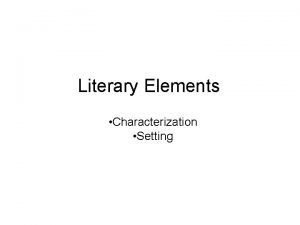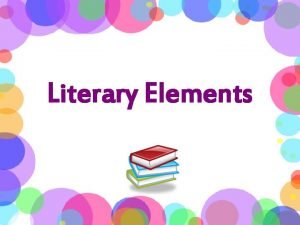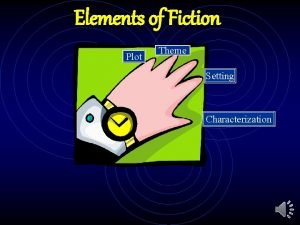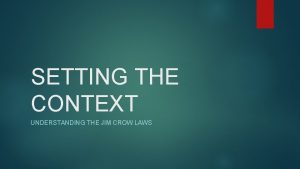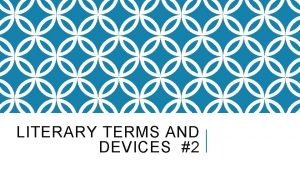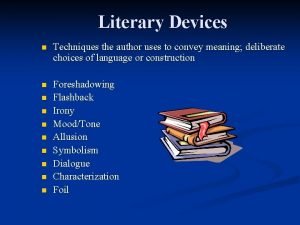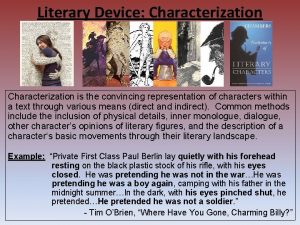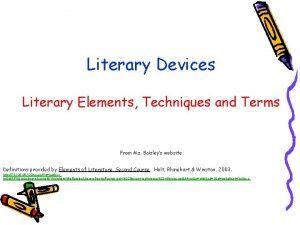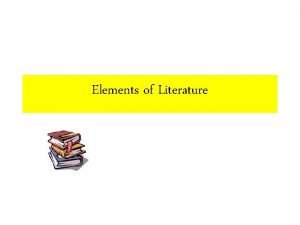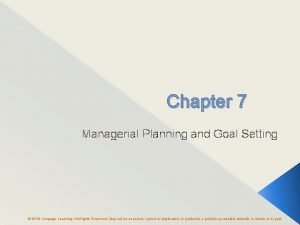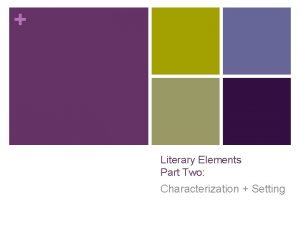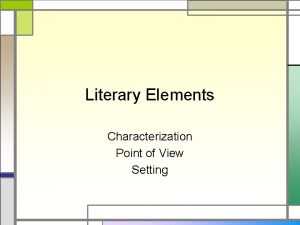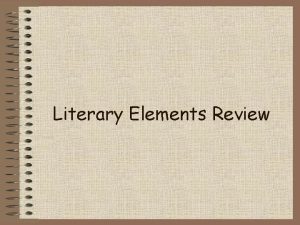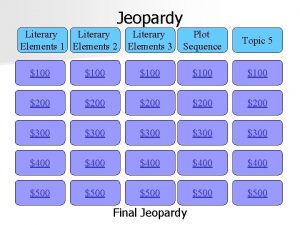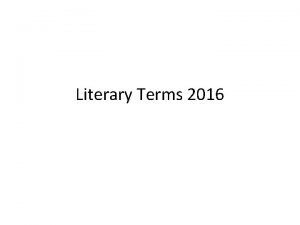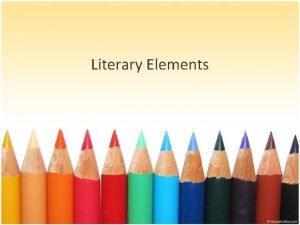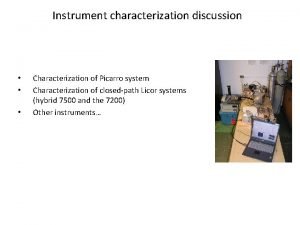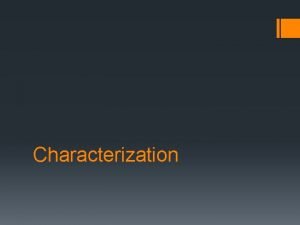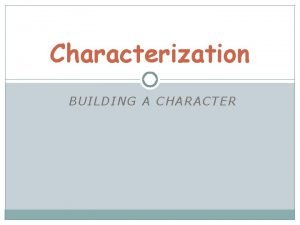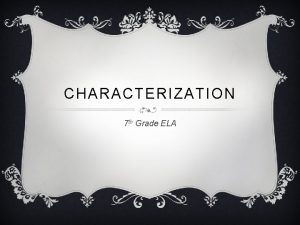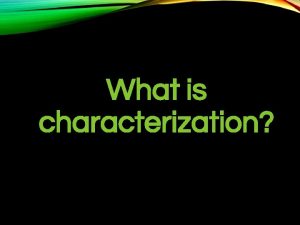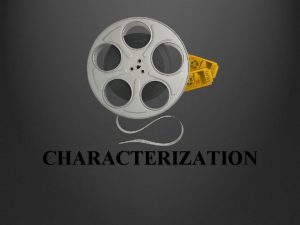Literary Elements Characterization Setting Literary Elements Characteristics of
















- Slides: 16

Literary Elements • Characterization • Setting

Literary Elements • Characteristics of a text • Derived from reading text • Applies only to fiction books

Literary Element: Character Revelation Character directly Words from character Thoughts and feelings of character indirectly Actions/ appearance of the character Response from others to the character

Types of characters: • Rounded characters – well known – Variety of traits – believable

Types of characters (cont’d) • Protagonist – Central to text – Issues revolve around this character – reader identifies with

Types of characters (cont’d) • Flat characters – Less developed – Quick intro – Fewer traits – Shows how protagonist behaves – Help carry action – Make setting believable

Types of characters (cont’d) • Stereotyped characters – Character in fiction – Fits a standardized mental picture – Narrow roles – portrayed as having only one trait and thus lack the depth that people in real life have

Types of characters (cont’d) • Foiled characters – A character who is meant to represent characteristics, values, ideas, etc. which are directly and diametrically opposed to those of another character, usually the protagonist. – Minor character – Opposite traits of main character – Highlights principal character

CHANGE IN CHARACTER • DYNAMIC – Changes throughout the course of action – Change may result from conflict • STATIC – Does not change – Conflict does not affect character – Include stereotype & foil – May also be round character or protagonist

Literary Element: Setting • • • Place (where) Time (when) General environ Critical to what character does Dynamic

Literary Element: Setting • The setting can be – Specific – Ambiguous (e. g. , a large urban city during economic hard times). – Also refers directly to a description.

Literary Element: Setting • The time setting might be a particular day, a season of the year, or a period in history. The place might be one room, a city, or the countryside. • The environment, or general conditions surrounding the characters, may be one of wealth and joy or poverty and despair.

Types of Setting: Backdrop setting: relatively unimportant for example, an internal conflict in the mind of first person narrator does not require a detailed setting.

Types of Setting: Integral • Integral setting: – time and place influence the action, character or theme

Functions of Setting • Clarifies conflict • Effects mood • Illuminates character • Setting may be a symbol…that is, it operates on two levels, the literal and the figurative. • For example, the forest as a place and as a symbol for the unknown

If it is important… • The author must make the reader see, hear, touch and maybe even smell the setting. • Uses action, details of colour, sound, figurative language to make the setting real to the characters and to the reader.
 Characterized
Characterized Literary elements characterization
Literary elements characterization Direct characterizations
Direct characterizations Direct and indirect characterization practice
Direct and indirect characterization practice Literary elemnts
Literary elemnts Setting elements of fiction
Setting elements of fiction Define literary techniques
Define literary techniques Understanding jim crow (setting the setting)
Understanding jim crow (setting the setting) Characterization definition literature
Characterization definition literature Literary devices in after twenty years
Literary devices in after twenty years Literary devices characterization
Literary devices characterization What is characterization literary device
What is characterization literary device Literary elements techniques
Literary elements techniques Short story background
Short story background Plot literary device
Plot literary device Falling action
Falling action Characteristics of goal setting
Characteristics of goal setting
